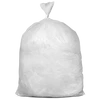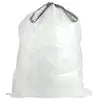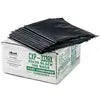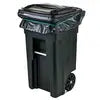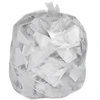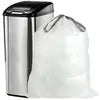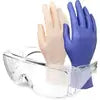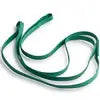Low Density (LD)
 Low density trash bags are thick, flexible and highly resistant to puncturing and tearing. They are ideal for kitchen trash, construction debris or trash that includes glass, metal, wood, cardboard or other sharp, jagged or irregular shaped items.
Low density trash bags are thick, flexible and highly resistant to puncturing and tearing. They are ideal for kitchen trash, construction debris or trash that includes glass, metal, wood, cardboard or other sharp, jagged or irregular shaped items.
Their durability make them a great choice for kitchen and outdoor trash cans, as well as wheeled trash cans. When you need tough bags, low density is the best choice.
For thinner, more economical bags, see high density plastic bags below
.Low density bags are measured in mils which is one thousandth (.001) of an inch. A higher mil count means a thicker bag. You'll find mil counts ranging from a standard 0.9 mil kitchen bag to an extra-thick 6.0 mil contractor bag.
High Density (HD)
 High density trash bags have a different manufacturing process than low density trash bags, making them thinner and not as puncture resistant. However, they can still carry very heavy loads that are not rough-edged such as clothing, towels and dirt.
High density trash bags have a different manufacturing process than low density trash bags, making them thinner and not as puncture resistant. However, they can still carry very heavy loads that are not rough-edged such as clothing, towels and dirt.
High density bags are a great choice for office and restroom waste, shredded paper and in public areas where sharp trash is not deposited.
High density bags can easily be identified by their clear appearance and crinkly feel. Because they use less plastic, high density bags are generally less expensive than their low density cousins, providing a cost-effective solution.
High density bags are most often measured in microns, which is one thousandth (.001) of a millimeter.[caption id="attachment_859" align="alignleft" width="1130"] Click to enlarge[/caption]







